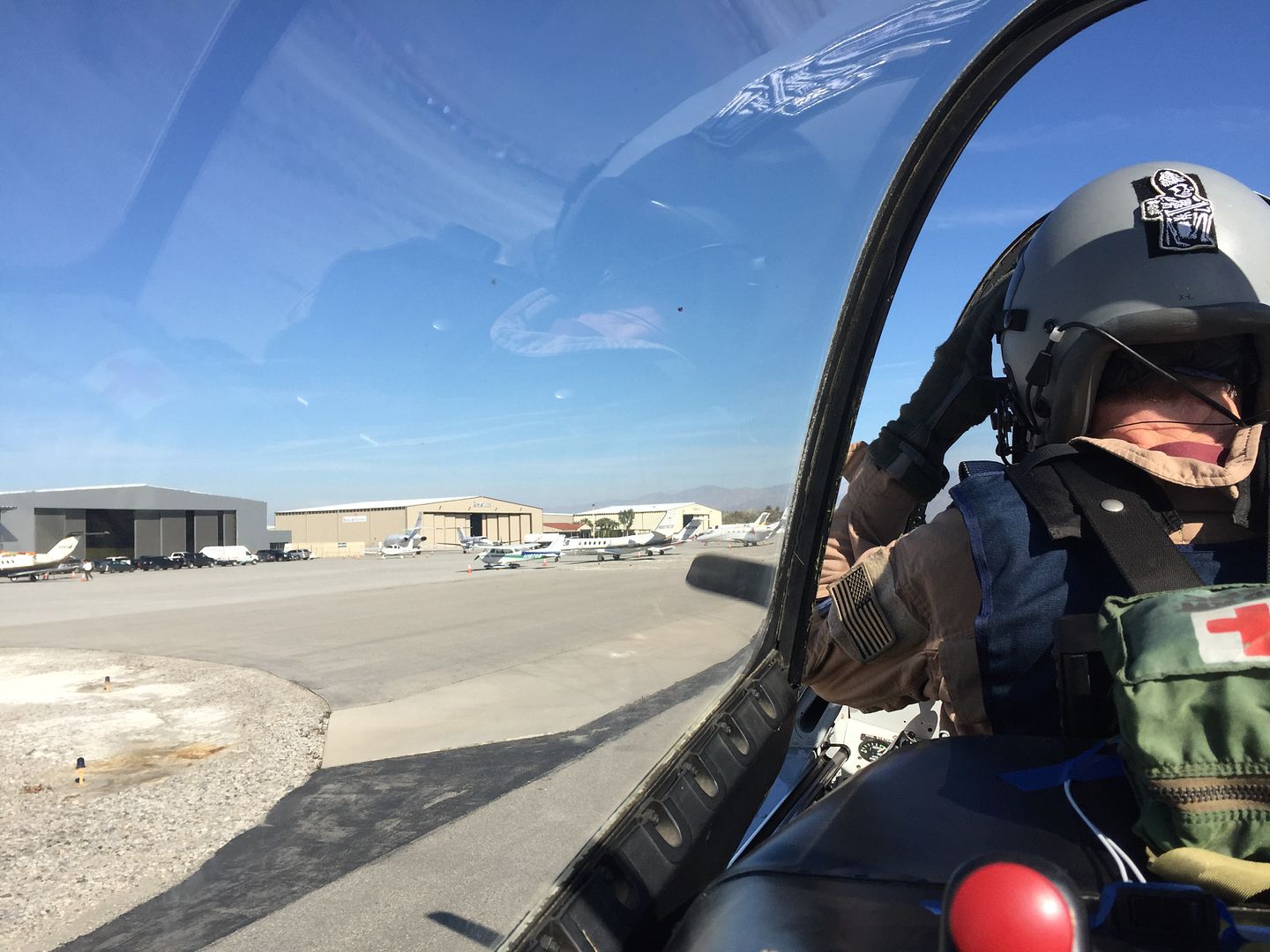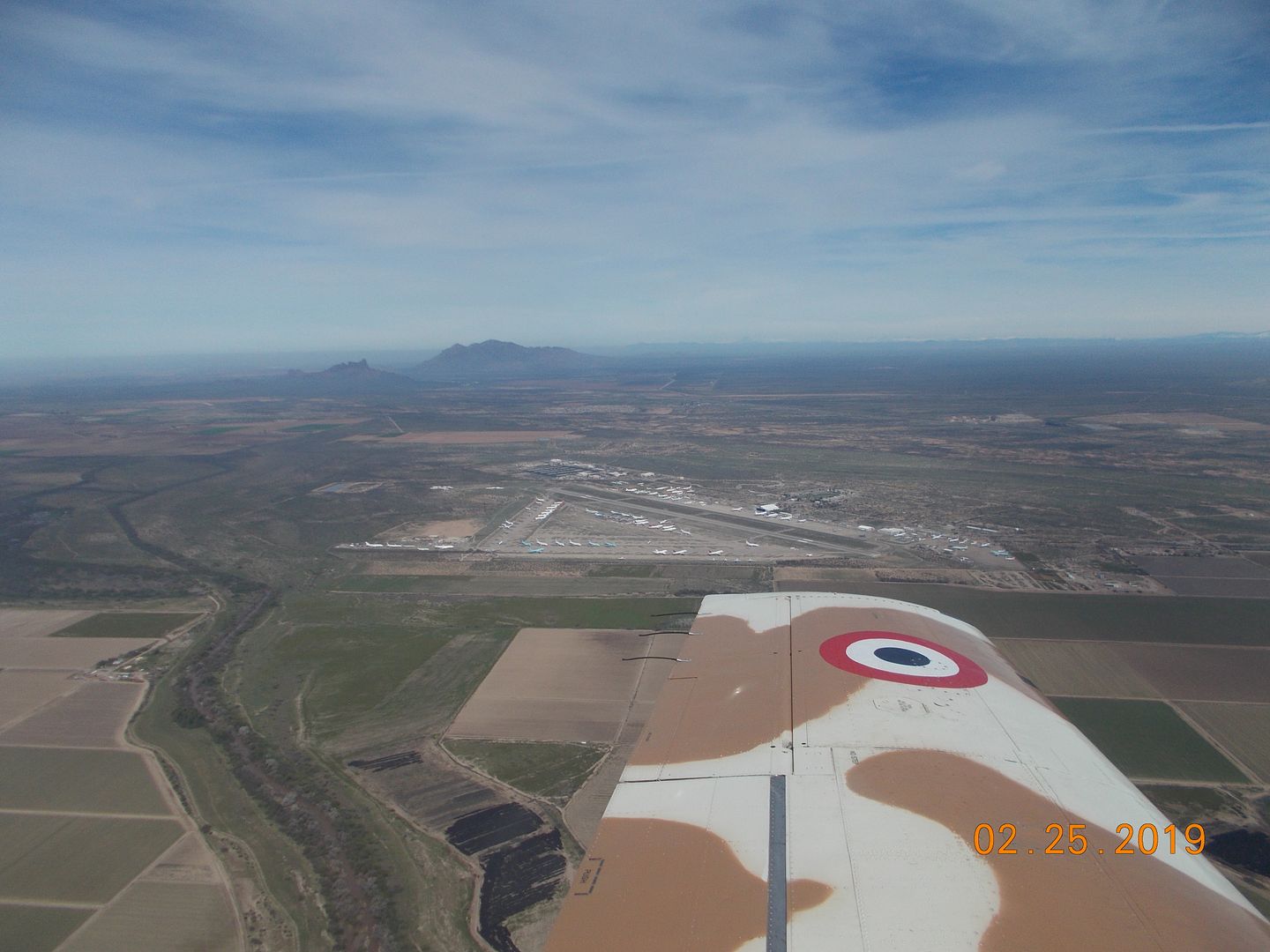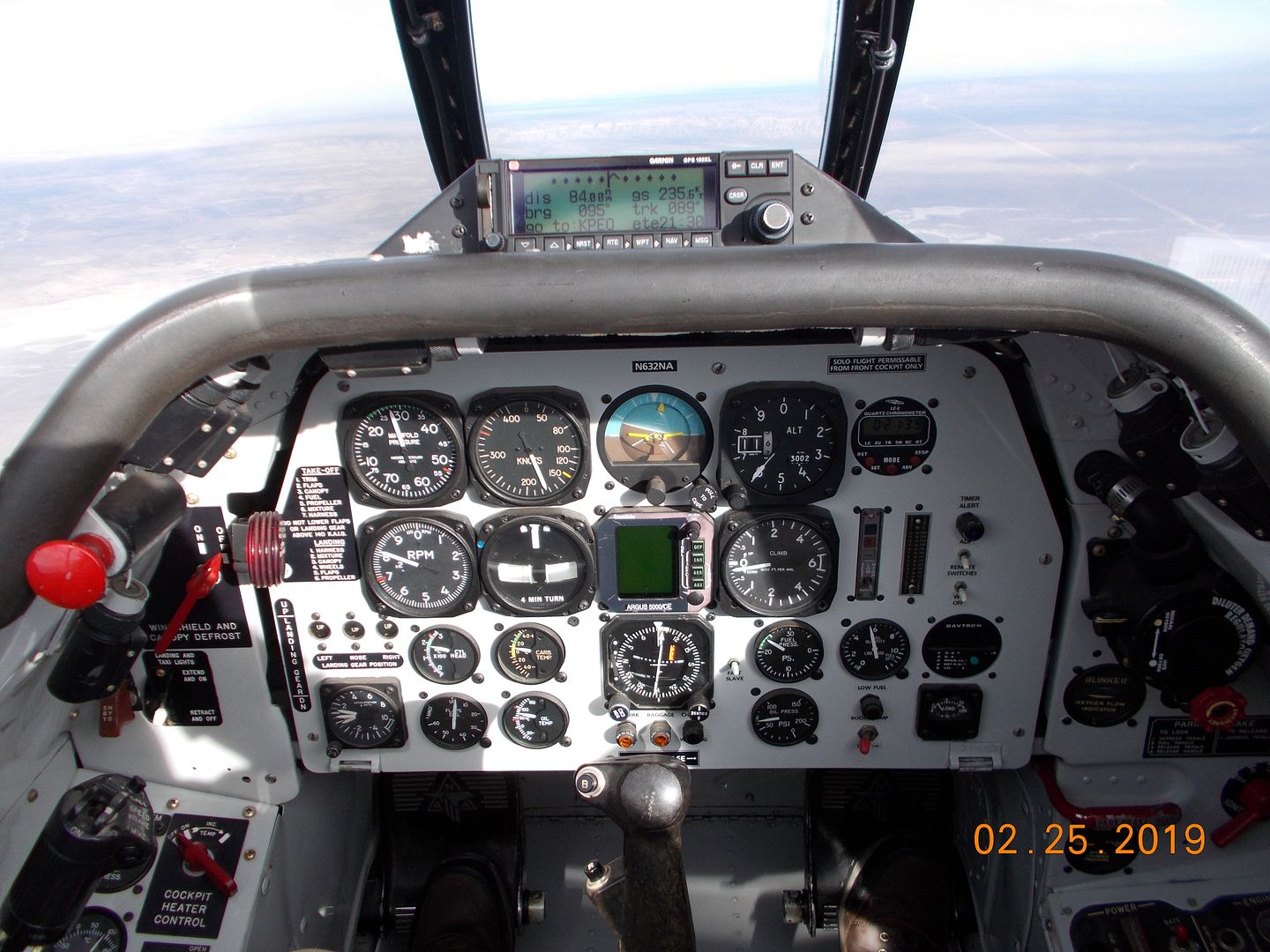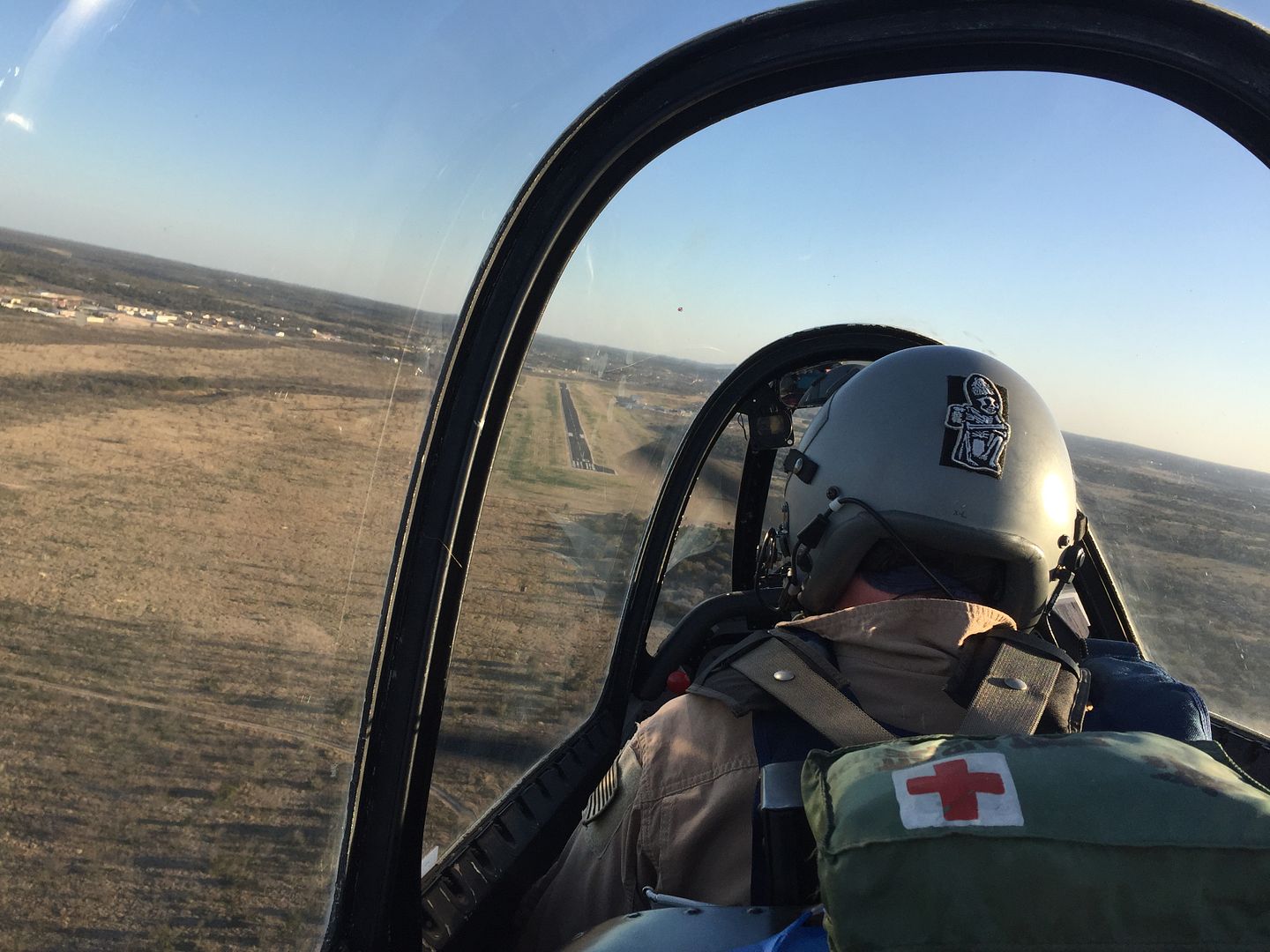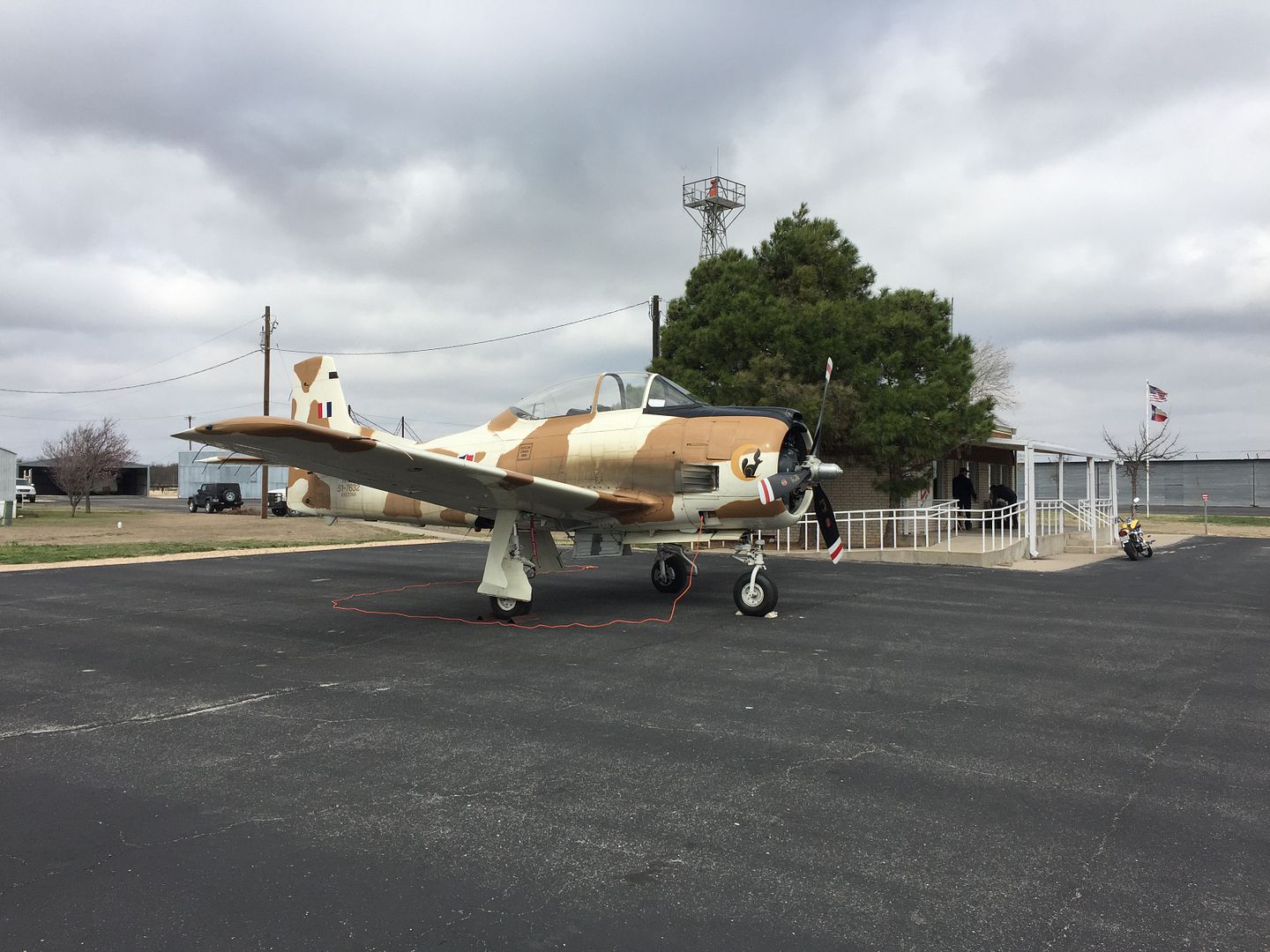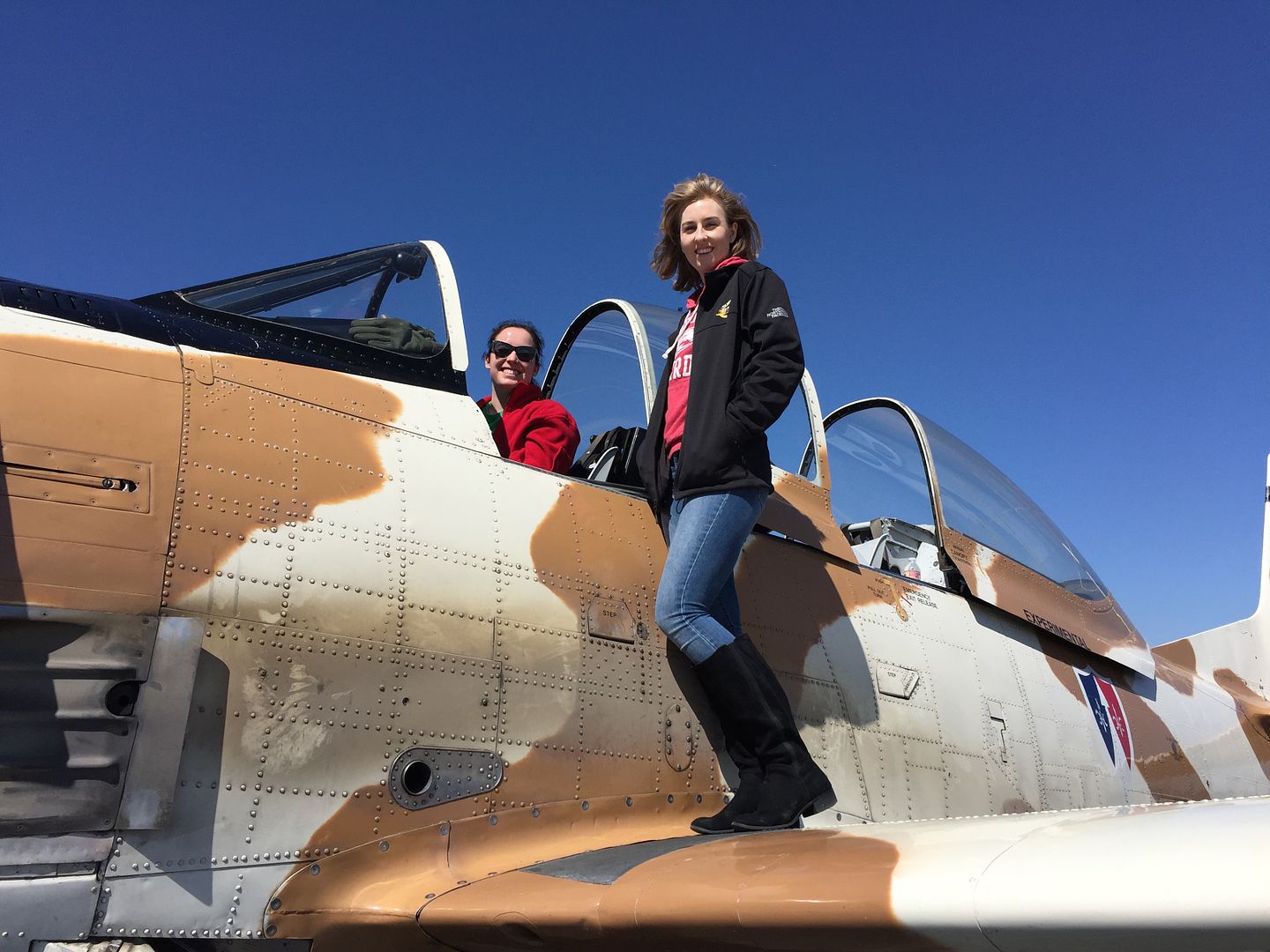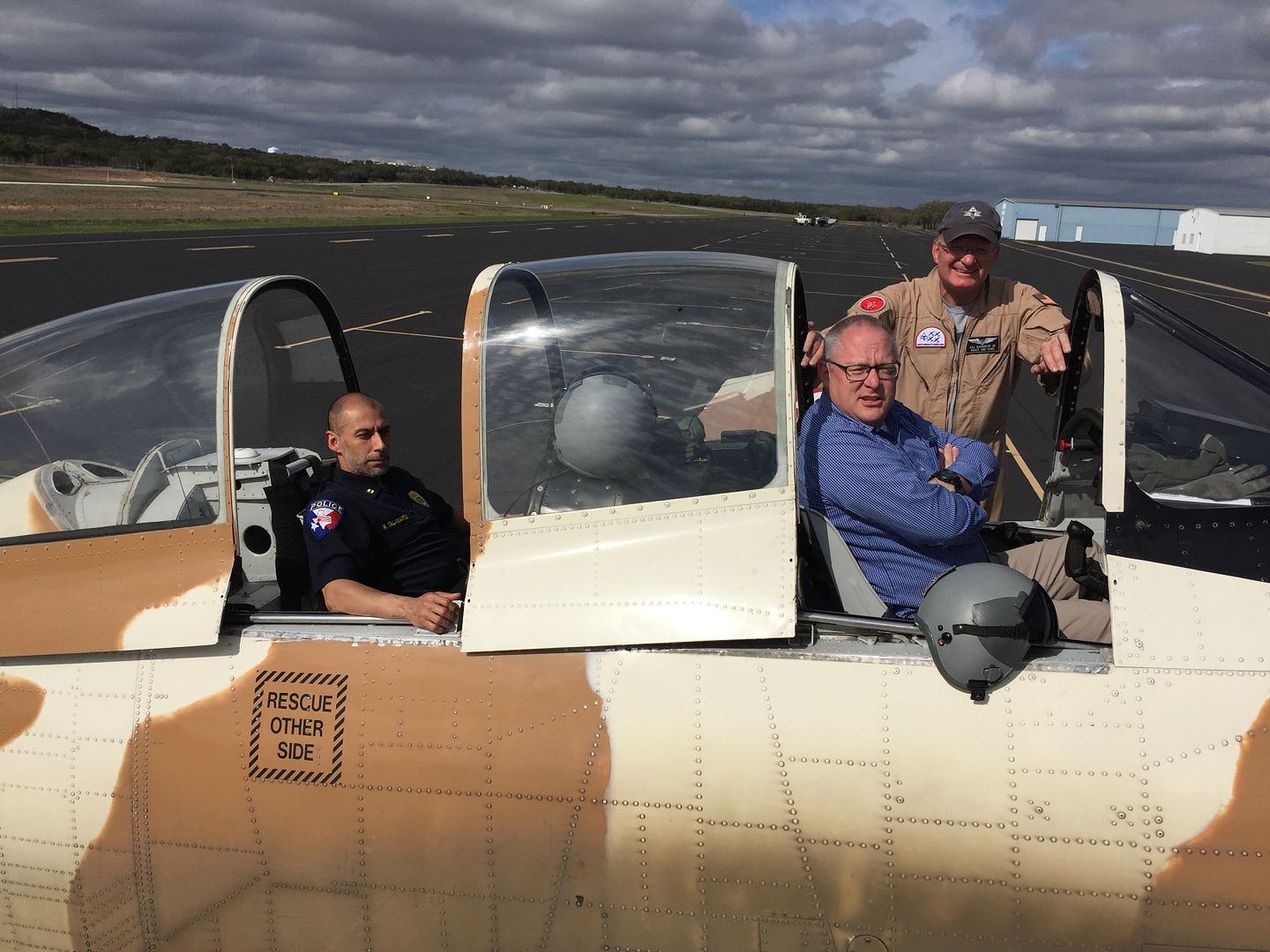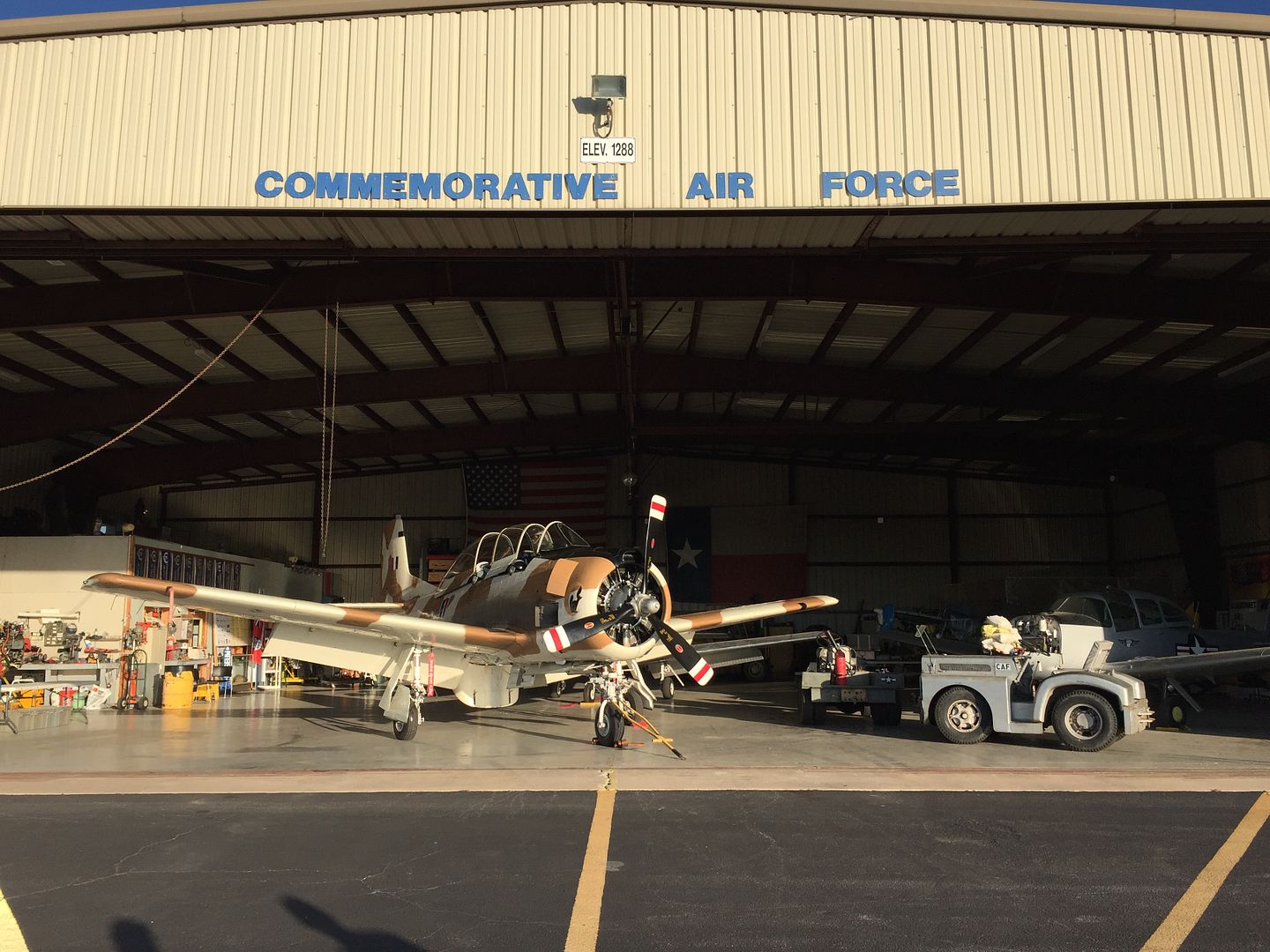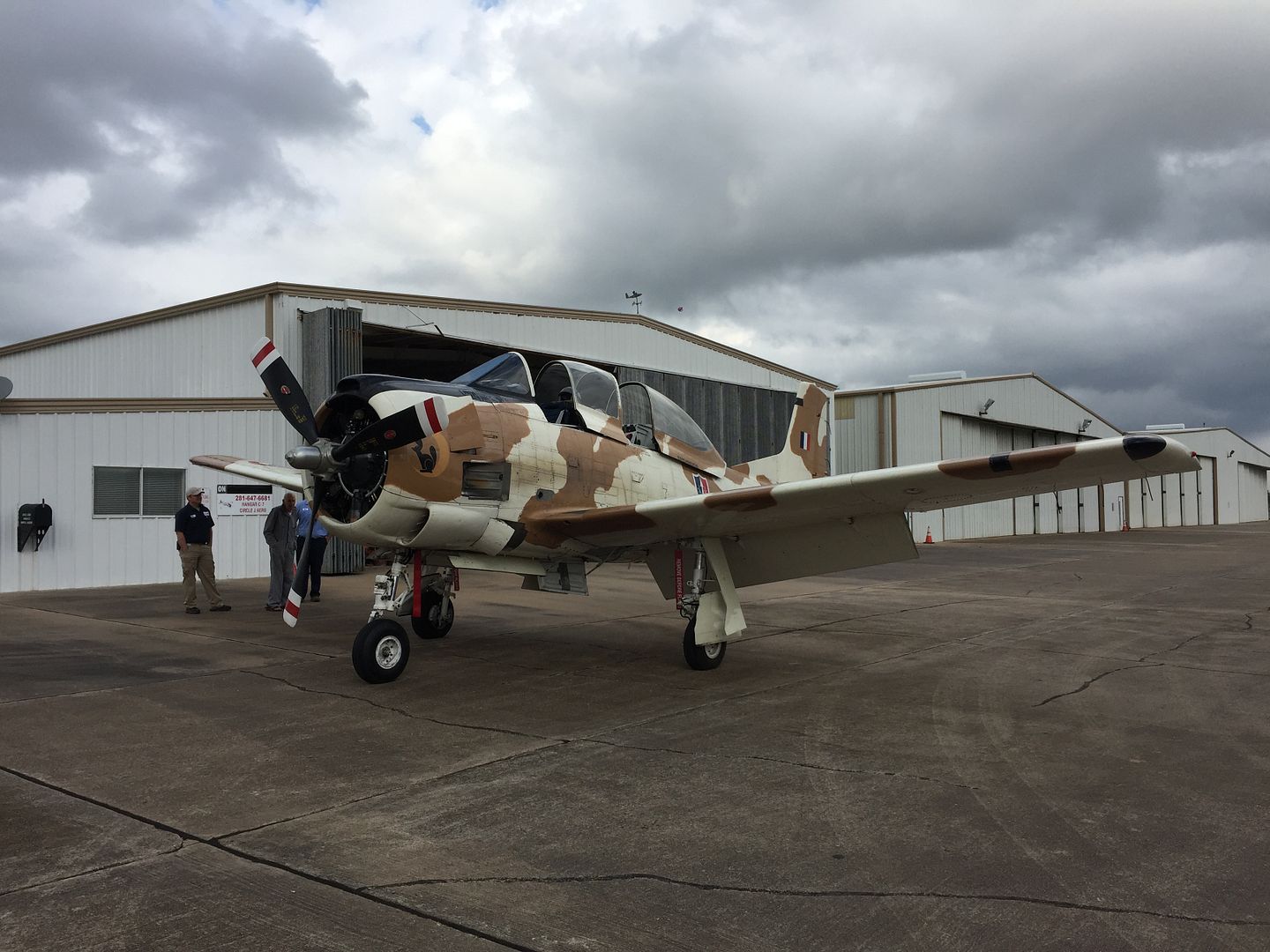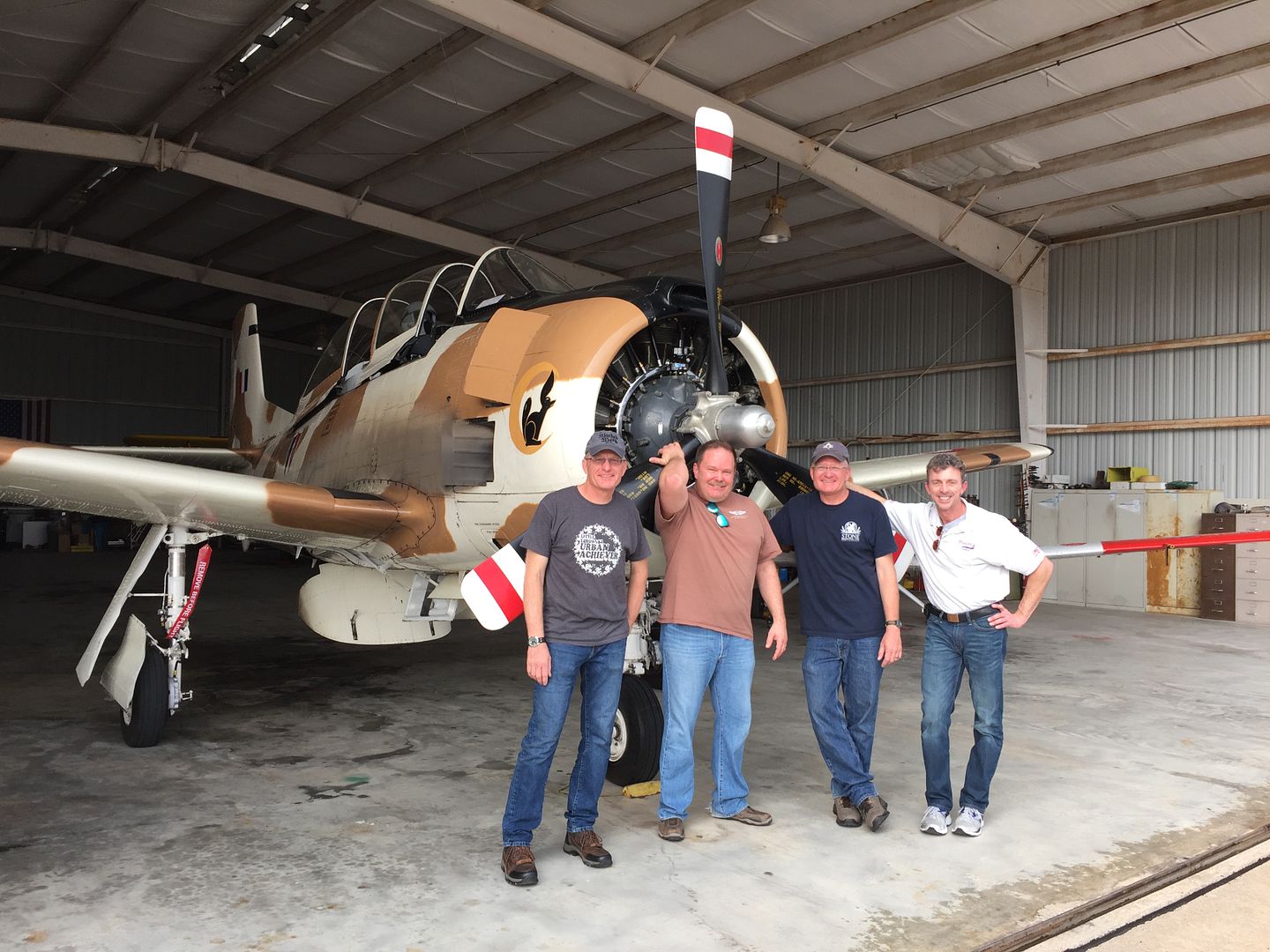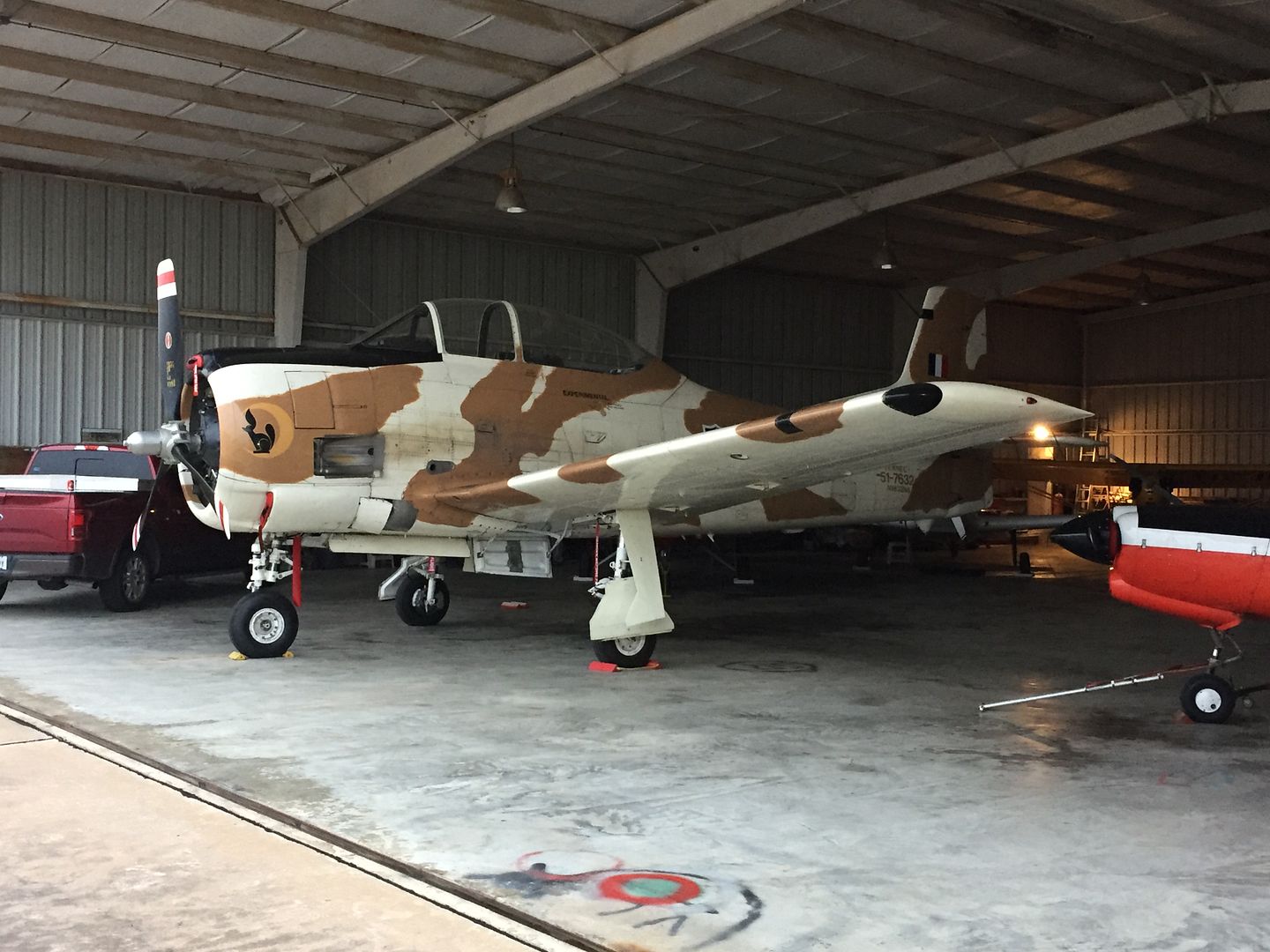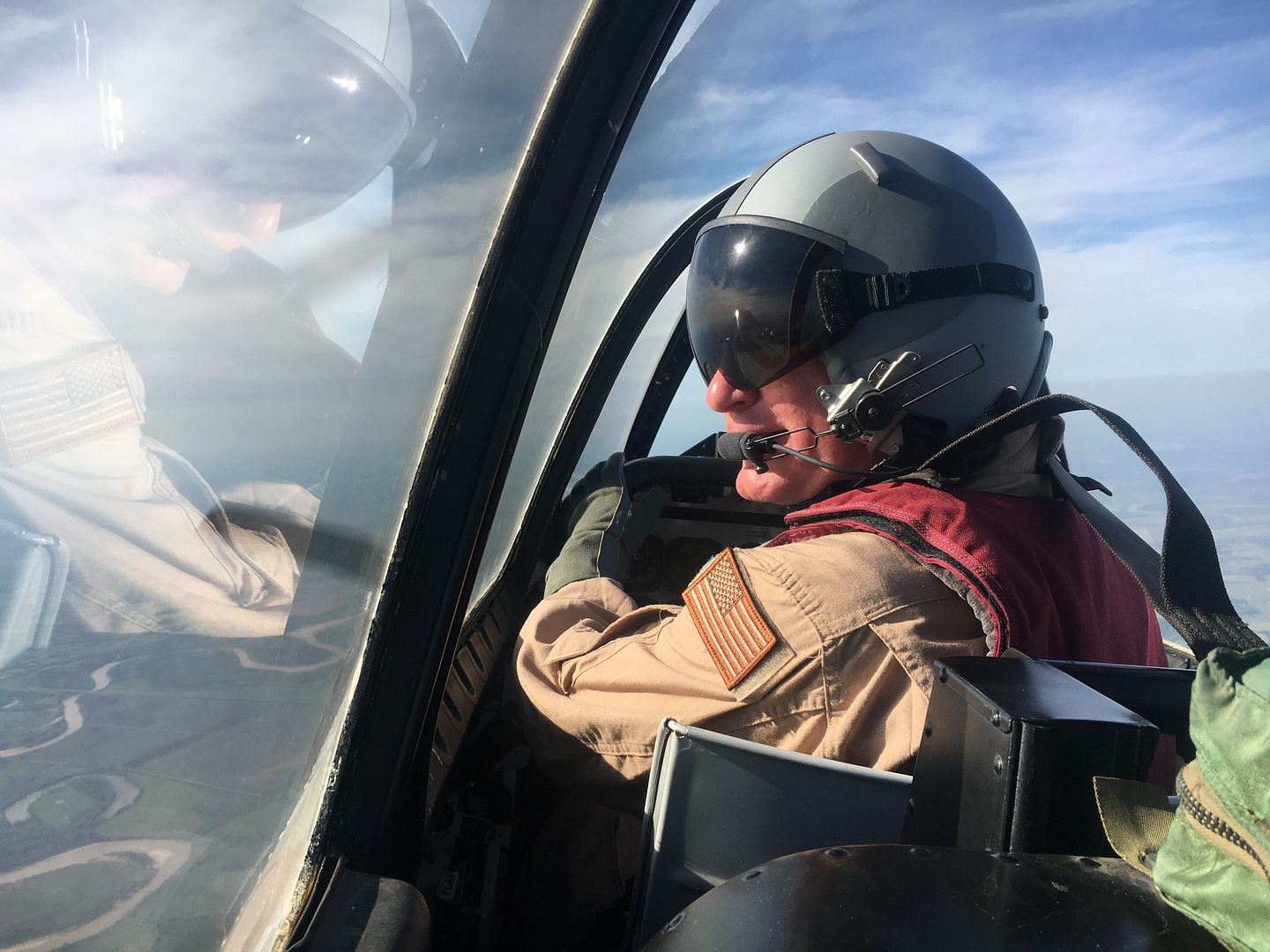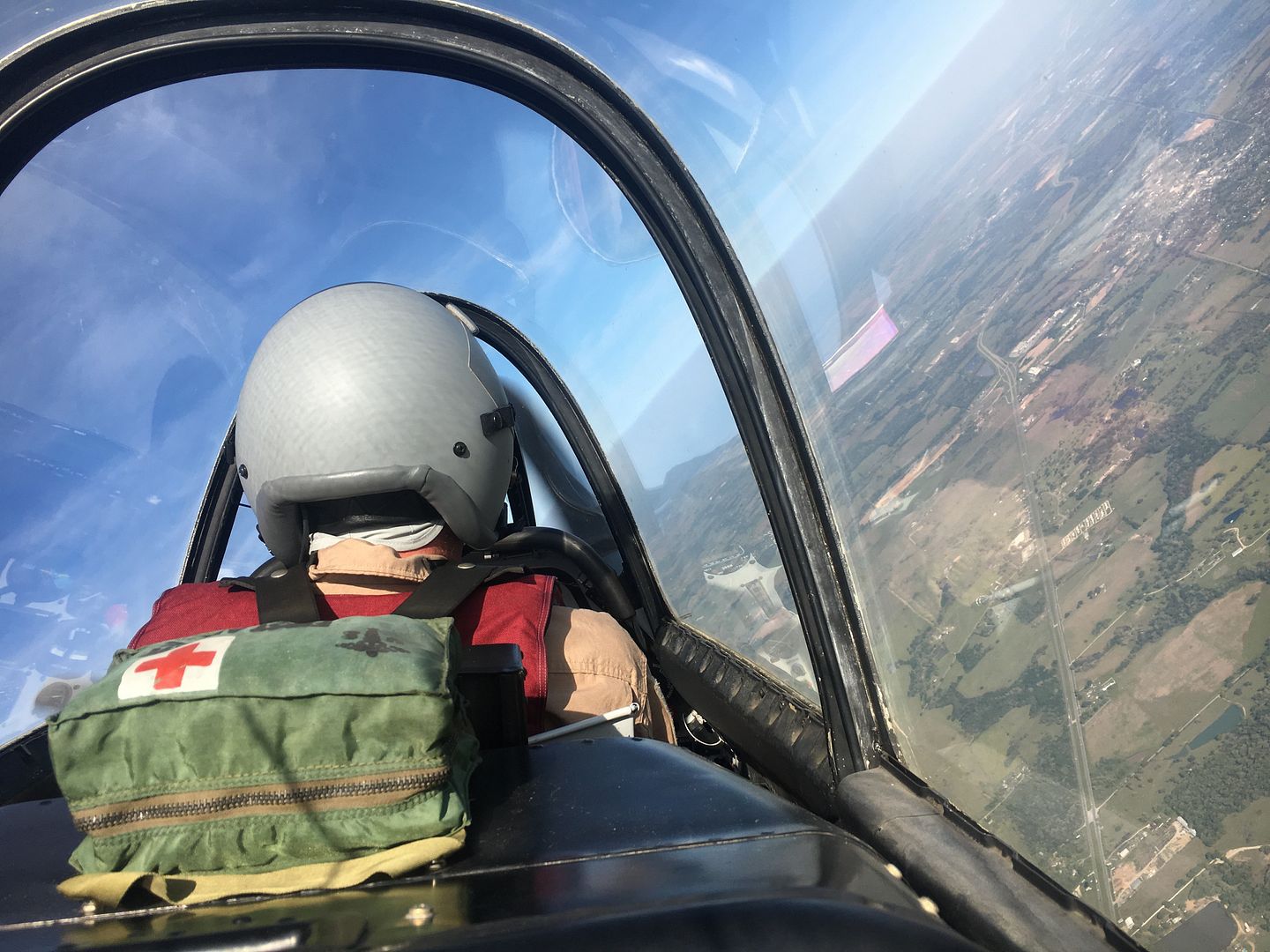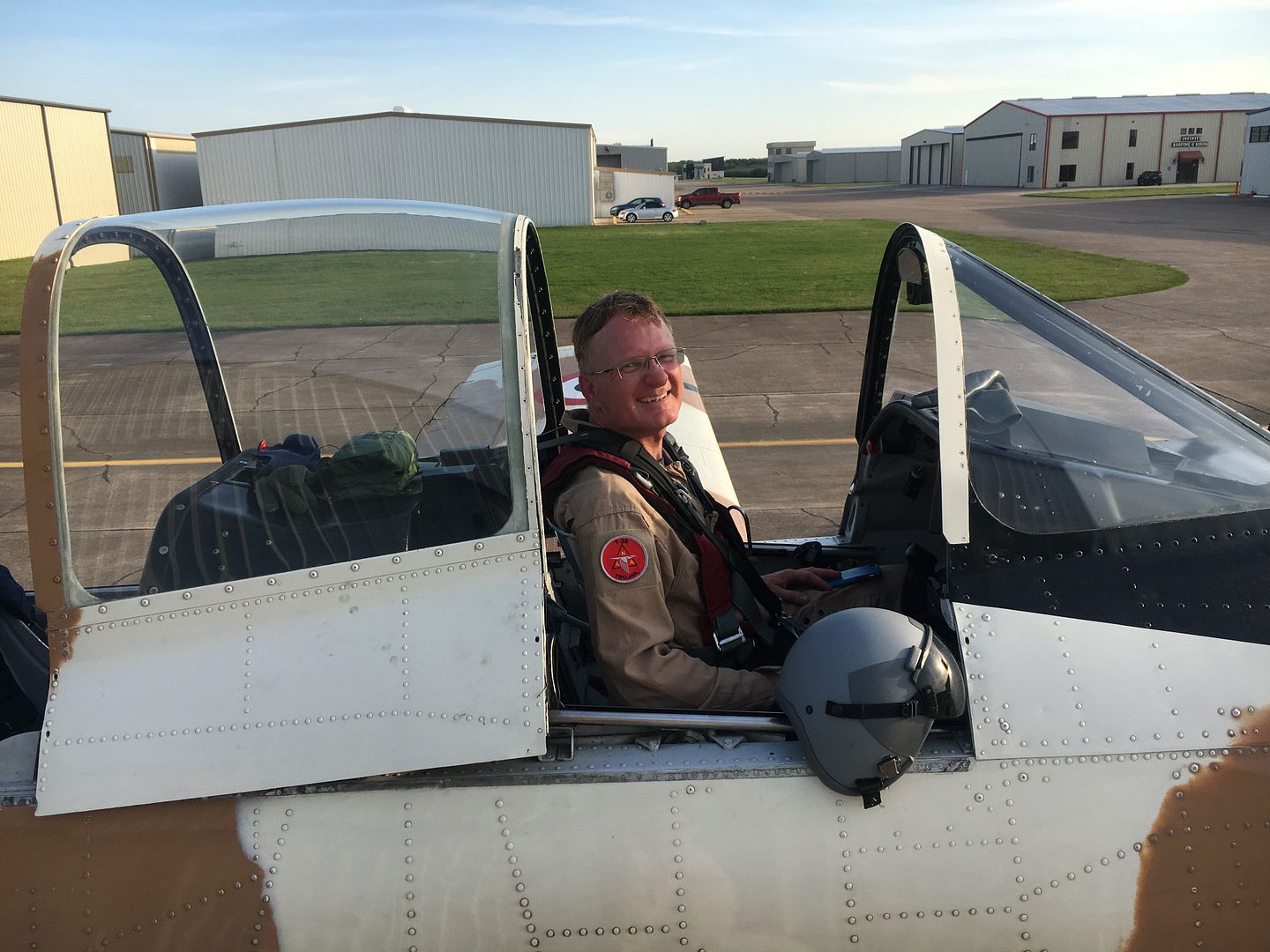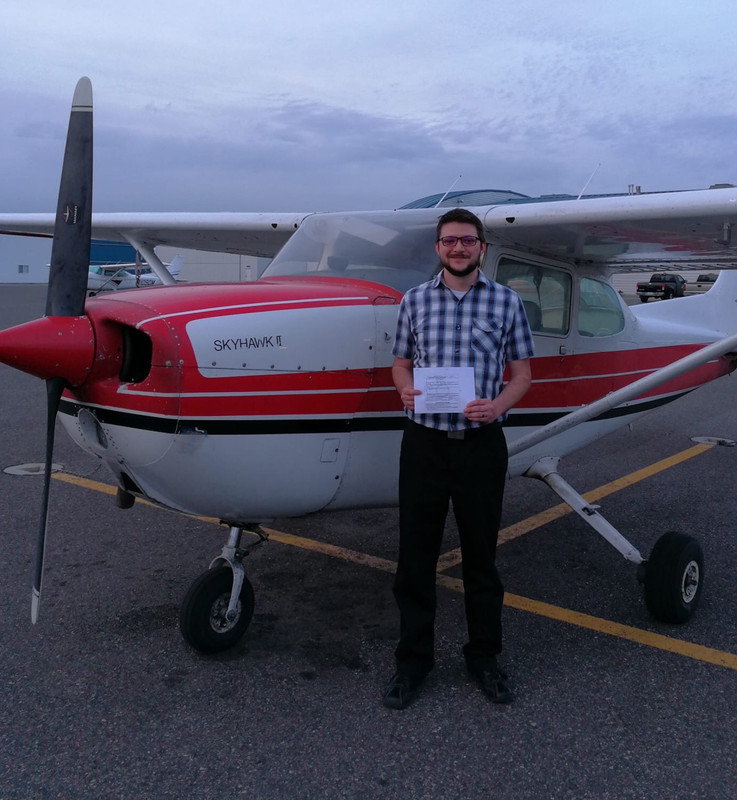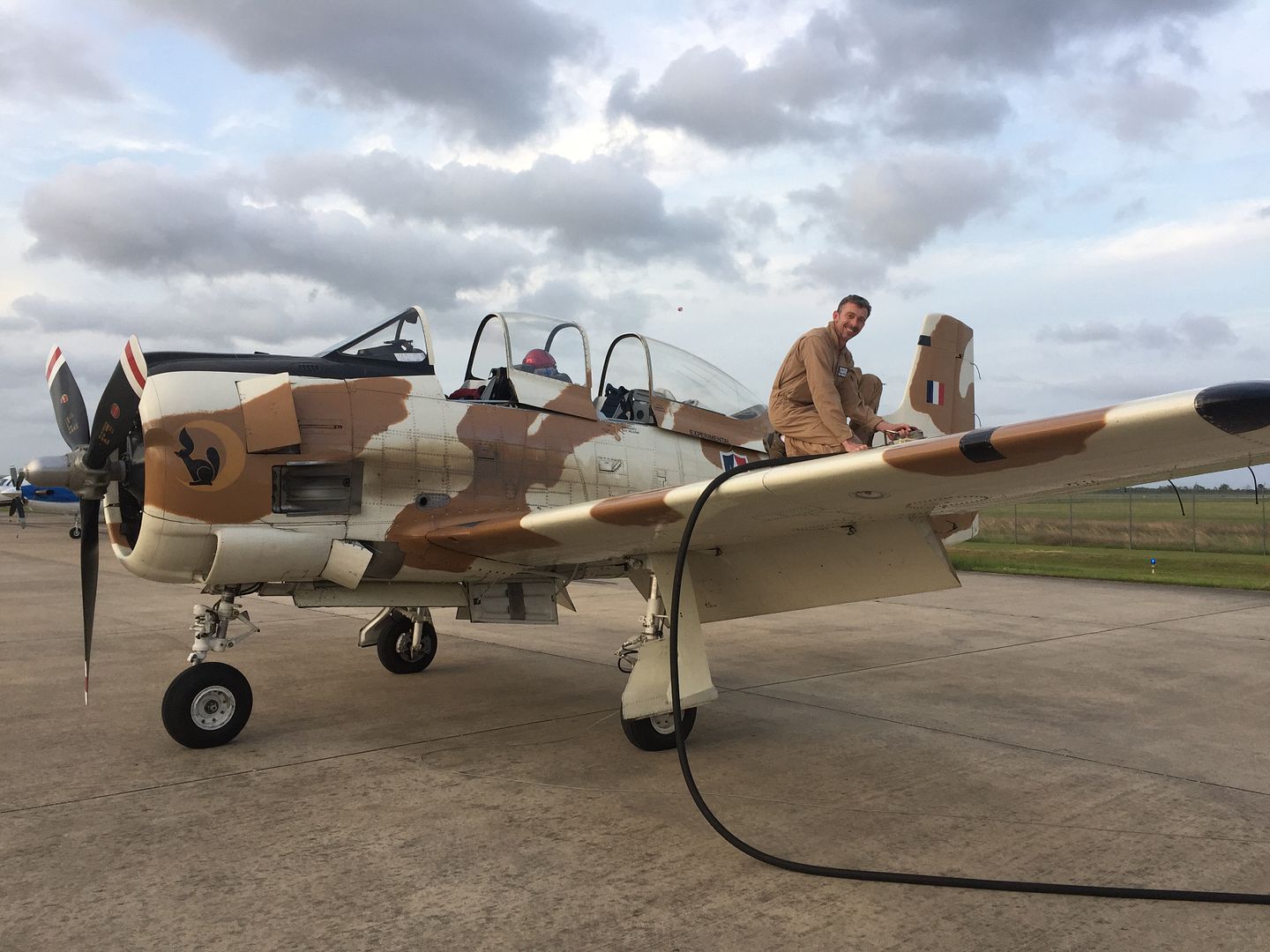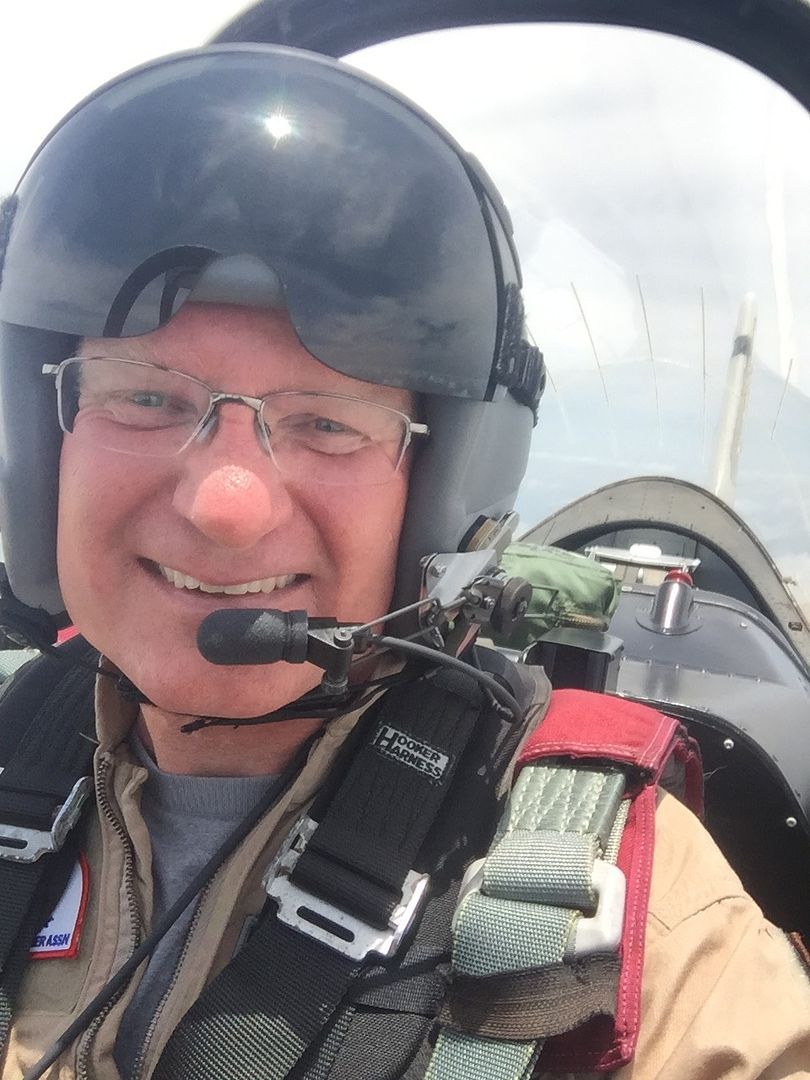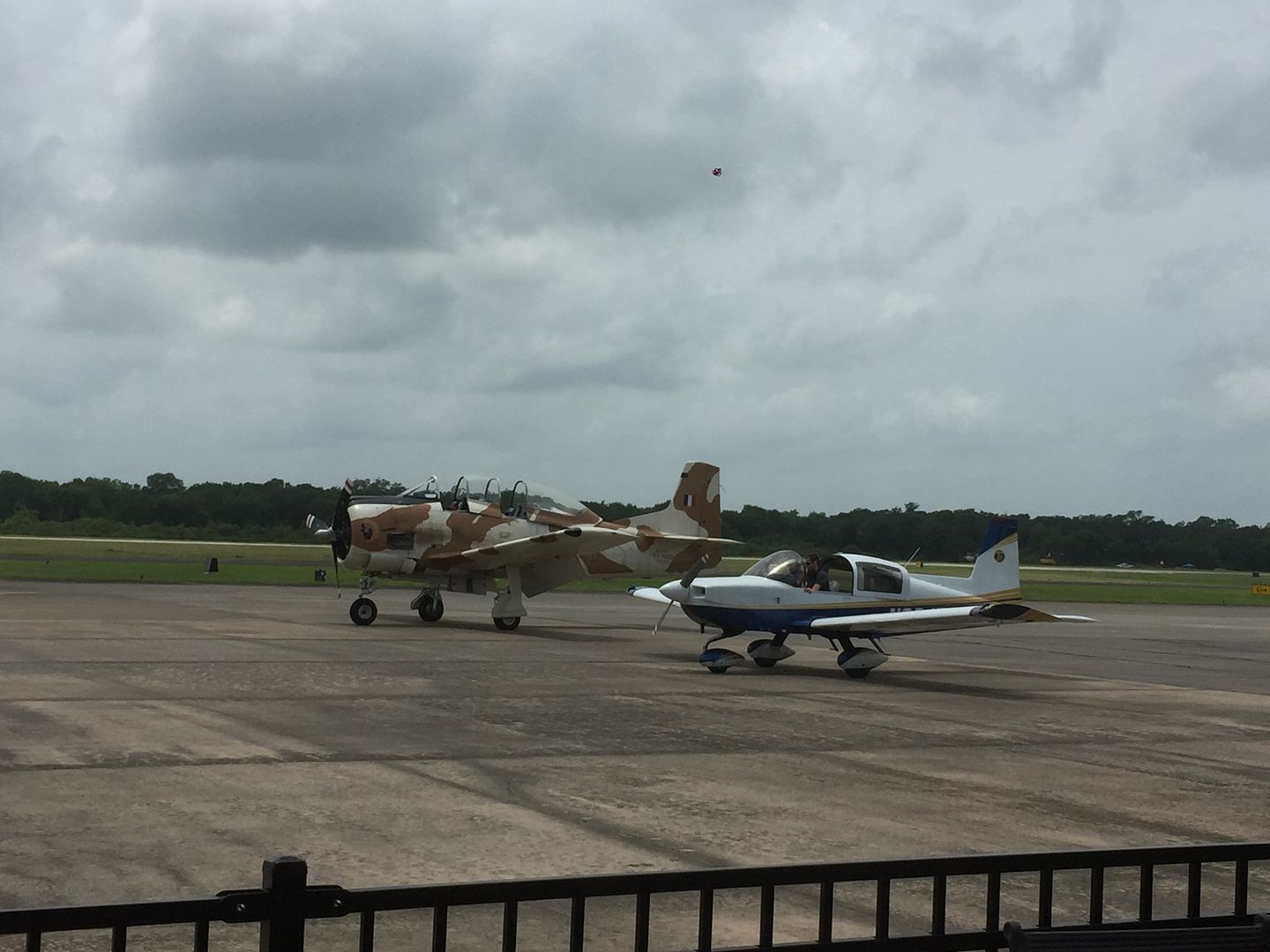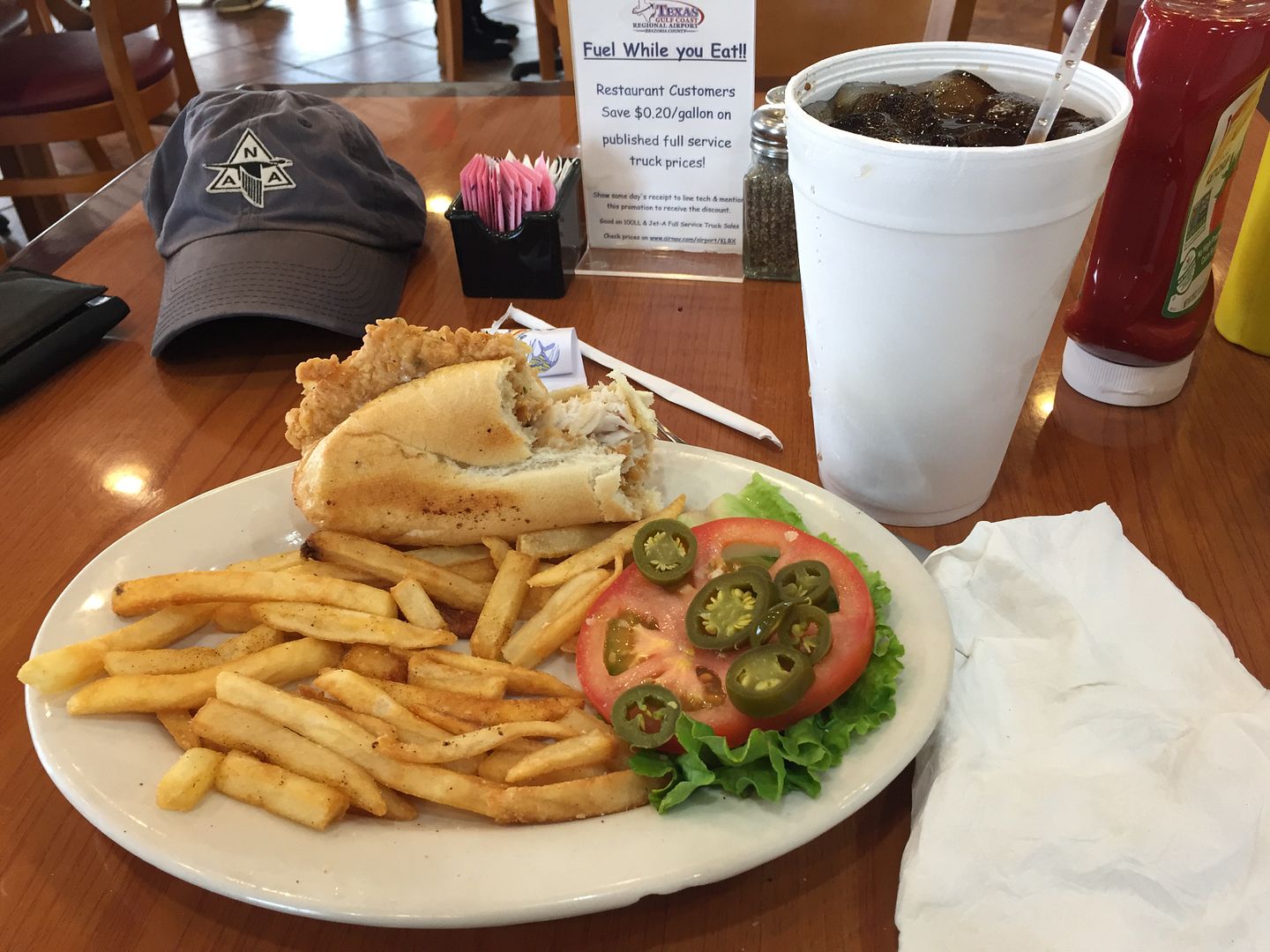The chiming of the cash register was never far from my mind during this project! Some of the components were just stupid expensive...but again, it was good to be able to split everything between five guys. Here's a list that I've taken from some invoices: oil filter kit, $1500; battery conversion kit, $1460; carburetor overhaul, $5700; prop governor overhaul, $1400; prop AD inspection/overhaul, $6200; fuel bladder repairs, $5020; a fuel valve t-fitting, $660; rudder actuator rod and two prop control cables, $300; Garmin GPS repair and VFR transponder check, $570; and then there was $14000 paid to the original mechanic for various parts and inspections that had to be done. Nose gear fork x-ray, oxygen/nitrogen/fire bottle hydrostat tests, stuff like that. And then there's the labor bills for the two mechanics. I don't even want to think about it. But Pete got the thing flying in only 18 working days. Granted, those 18 days spanned over about 4 months...but we still got it finished up way earlier than the original guy could have ever done. One of the cheapest fixes? The altitude encoder. The avionics guy hooked me up with a fix, $40 cash, no paperwork. That was awesome. Money well spent.
I'm not sure if there's a published overhaul interval on these old engines. This R-1820 has 488 hours on it since major overhaul in 1994. That's fairly low in operating time, but a long time on the calendar! I've read that if treated right, they should run for about 1000 hours before they need to be overhauled. So we might have about 500 hours to go...but there are no guarantees in warbirds. We should probably start building up an engine overhaul fund in addition to the normal maintenance fund.
But at least now the airplane was flyable! On the morning of the 24th, we did another careful preflight and towed the ship outside. The weather was a lot better than the previous week!
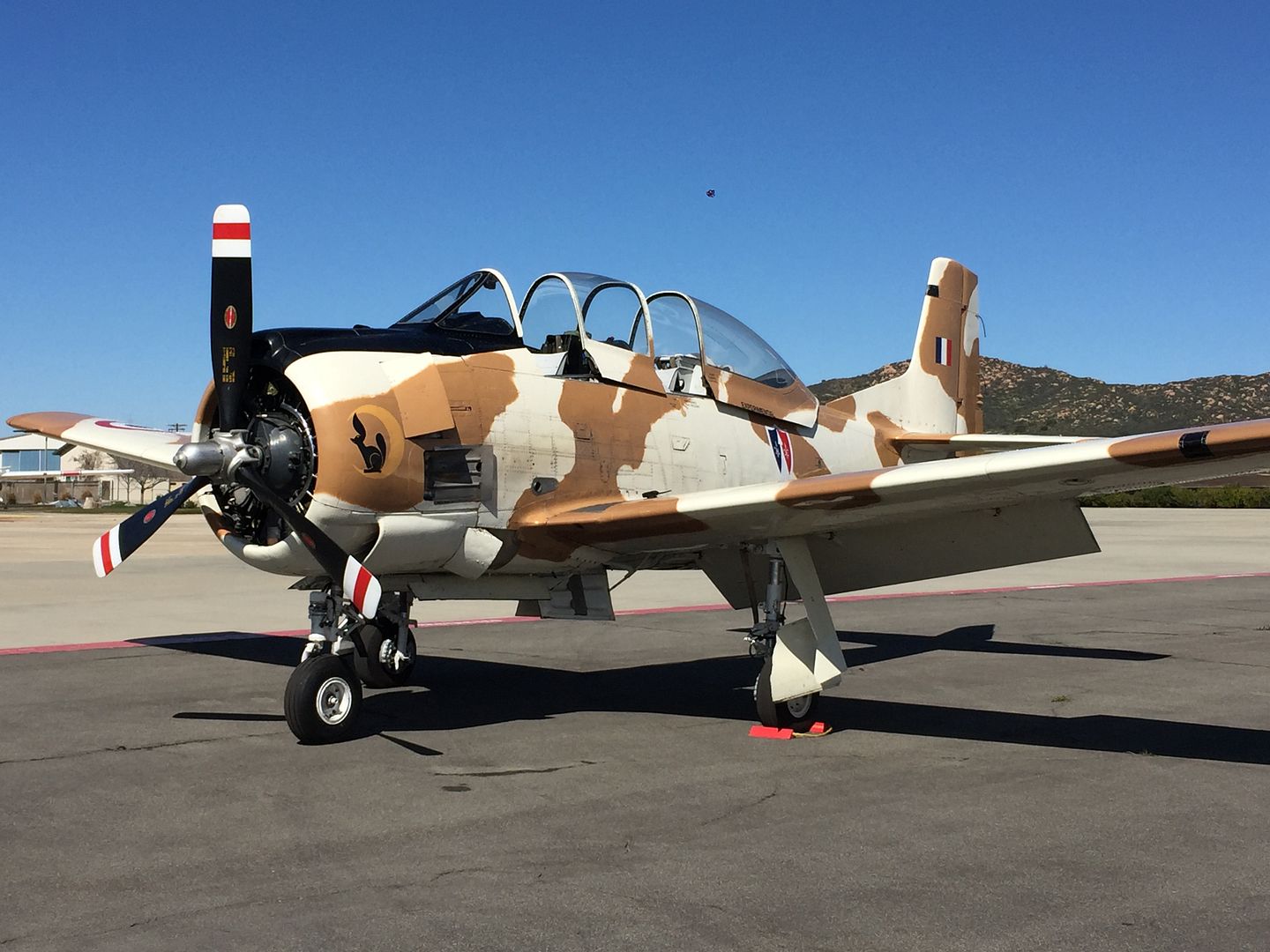
It was time for the third test flight, and initially I wanted to ride in the back seat...but with as much work as Pete did, and as much as he loves old airplanes, I figured he should get the first ride. He declined at first, but on the second offer he accepted.

They took off and circled the field for almost an hour. Pete did most of the flying from the back seat. The engine was running beautifully. After landing, we did the usual leak check and screen check. Pete's comment on the screen was, "it doesn't get any better than this." That's what we really wanted to hear...we were really concerned about the health of that engine after sitting for so long. And then it was time for another short test flight...and again, I let another guy take the back seat. Ben was a mechanic for the general aviation shop a few hangars down, and he helped us with minor errands here and there over two years. The guy that owned the hangar space that we were using also owned that shop, and he wasn't charging us any hangar rent at all. He only asked that we give one of his guys a ride. That's a fair deal...four months rent would have been around $2000!
Finally, on the third flight of the day, I got a ride in the back seat. I had a helmet on with thick ear cups for noise attenuation, but I still wasn't ready for the amount of noise that thing makes at takeoff power. It's loud! After the power reduction, it was much more reasonable. We circled over the field for a few minutes...

I sent my father-in-law a text as we taxied out...he flew T-28s as a USAF Cadet back in the '50s. I told him that we were taking off shortly and we'd widen out the pattern a bit to fly over his house. It was only 7 miles west of the field. I took the controls and headed west...following the streets I was able to find the house. We flew overhead in a turn at around 1500' and I could see him and my mother-in-law standing out back by the pool. I racked the beast back around in the other direction and made another turning pass over them. He told my wife later that he had tears in his eyes as we flew over. He loves that round-engine noise. After that, it was time to head back and land after about 20 minutes of flying.
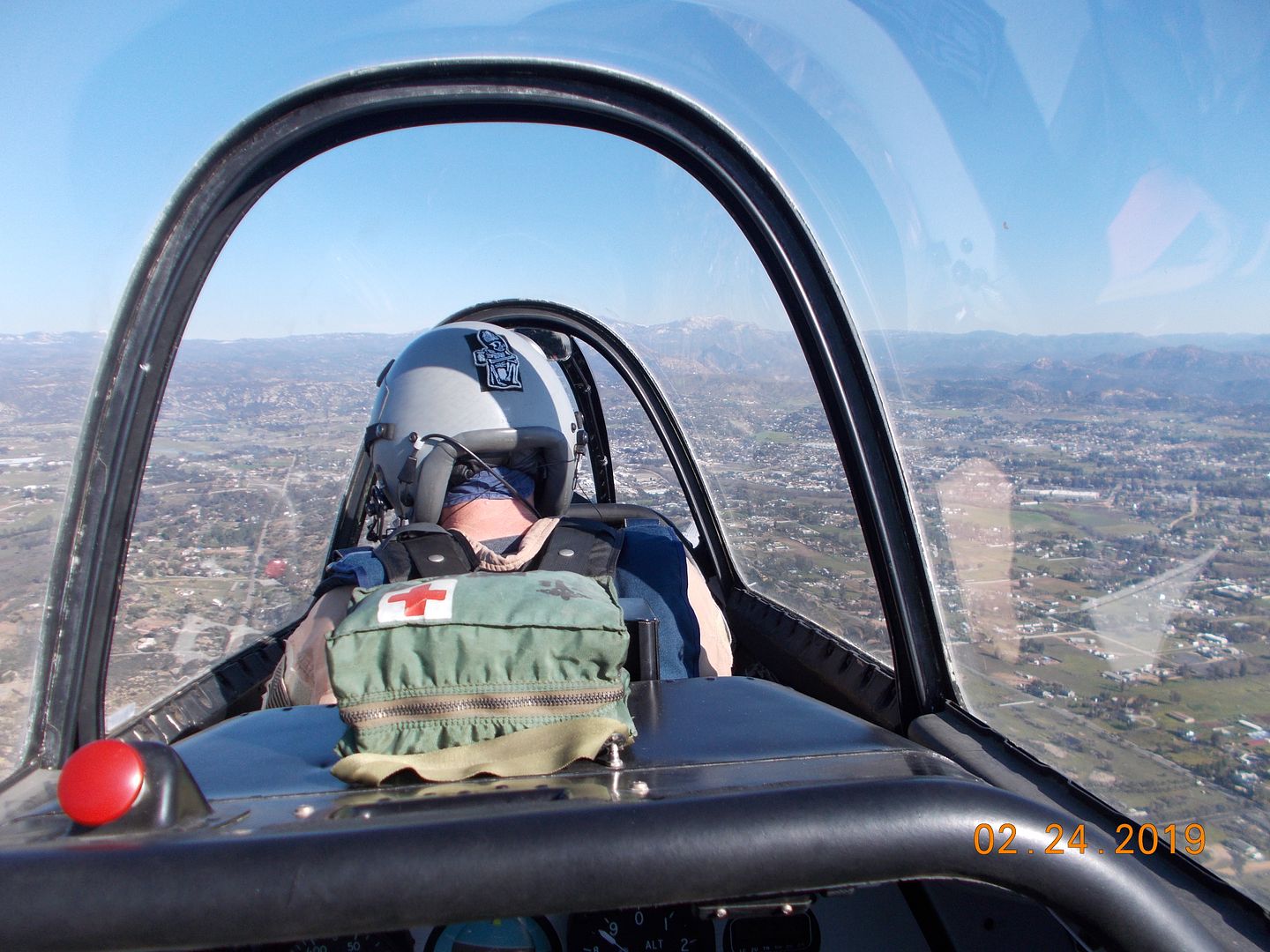
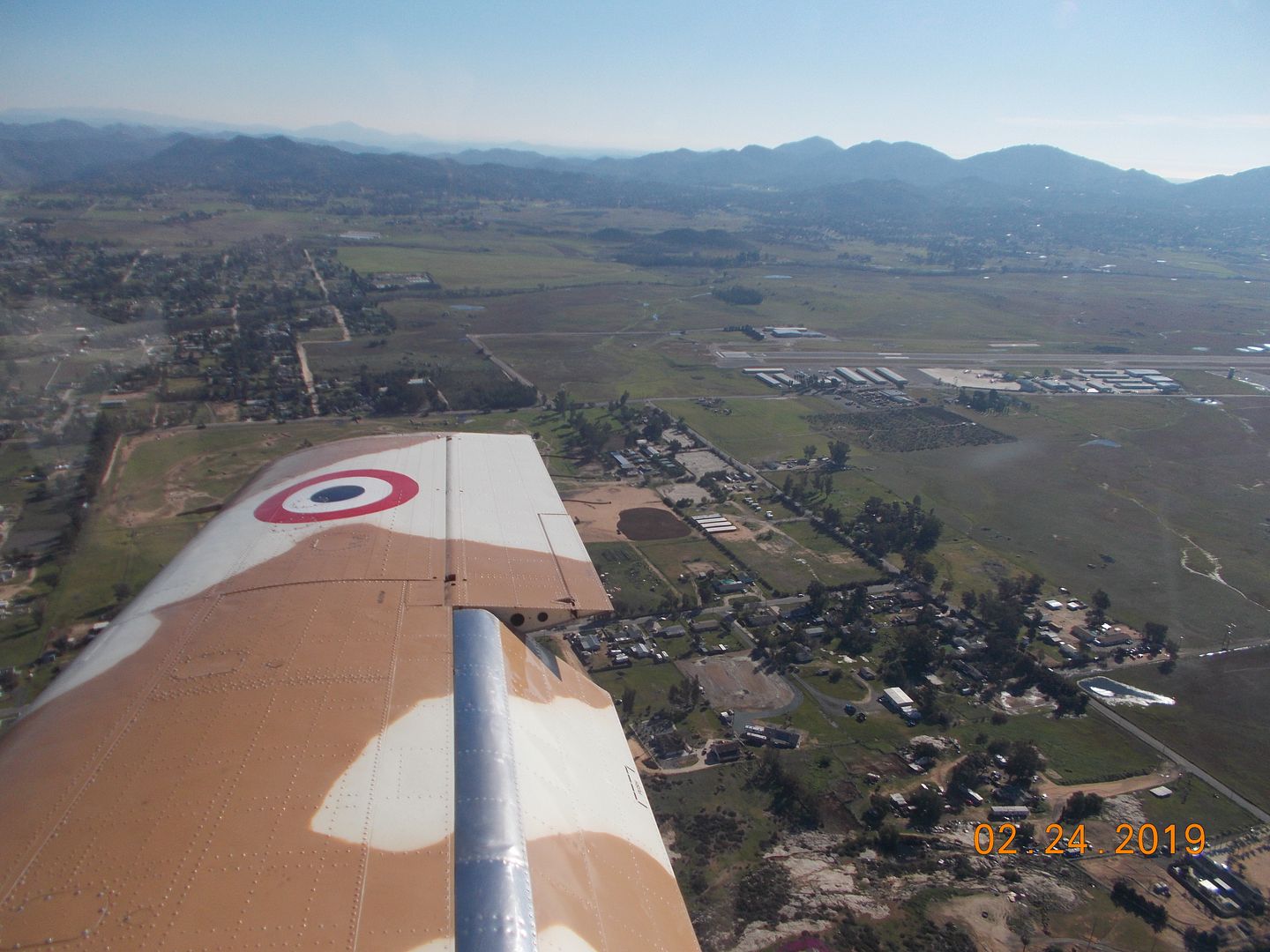
The airplane was running beautifully...screen checks were good, no fuel or oil leaks. Pete gave us his blessing to take the airplane back to Texas! I started loading up my car with all the crap in the hangar. Two tow-bars, cases of engine oil, spare parts, logbooks and manuals...the back of my little VW was stuffed full. We planned to take the airplane to Thermal CA, just south of Palm Springs for the night. We could depart there early the next morning and head for TX. I hit the road for the two hour drive to TRM, while John finished up a few small details with Pete. He launched, flew north, then east through the Banning Pass and then south to TRM. He landed while I still had an hour left to drive. He had the ship parked by the palm trees with the tail back over the putting green by the time I got there. Of course, the beast decided to drip some oil from the breather tube onto the green. I felt awful about that and offered to pay the FBO for cleaning, but they weren't too worried about it. But John and I were beyond thrilled to have the airplane AWAY from Ramona. That two year ordeal was over and the fun could begin. We spent about an hour getting all the crap loaded into the cargo compartment. Luckily I had plenty of tie-down straps. You can cram a lot of stuff back there...that's the advantage of the T-28. Don't try carrying much of anything in a fighter!

One of the best parts for me...no more driving to Ramona! In two years, I made the trip 26 times in the VW, and 14 times on the motorcycles. That's about 8800 miles of running back and forth. It's a fun and scenic ride, but it's not as much fun in the car.
More to follow later...
I'm not sure if there's a published overhaul interval on these old engines. This R-1820 has 488 hours on it since major overhaul in 1994. That's fairly low in operating time, but a long time on the calendar! I've read that if treated right, they should run for about 1000 hours before they need to be overhauled. So we might have about 500 hours to go...but there are no guarantees in warbirds. We should probably start building up an engine overhaul fund in addition to the normal maintenance fund.
But at least now the airplane was flyable! On the morning of the 24th, we did another careful preflight and towed the ship outside. The weather was a lot better than the previous week!

It was time for the third test flight, and initially I wanted to ride in the back seat...but with as much work as Pete did, and as much as he loves old airplanes, I figured he should get the first ride. He declined at first, but on the second offer he accepted.

They took off and circled the field for almost an hour. Pete did most of the flying from the back seat. The engine was running beautifully. After landing, we did the usual leak check and screen check. Pete's comment on the screen was, "it doesn't get any better than this." That's what we really wanted to hear...we were really concerned about the health of that engine after sitting for so long. And then it was time for another short test flight...and again, I let another guy take the back seat. Ben was a mechanic for the general aviation shop a few hangars down, and he helped us with minor errands here and there over two years. The guy that owned the hangar space that we were using also owned that shop, and he wasn't charging us any hangar rent at all. He only asked that we give one of his guys a ride. That's a fair deal...four months rent would have been around $2000!
Finally, on the third flight of the day, I got a ride in the back seat. I had a helmet on with thick ear cups for noise attenuation, but I still wasn't ready for the amount of noise that thing makes at takeoff power. It's loud! After the power reduction, it was much more reasonable. We circled over the field for a few minutes...

I sent my father-in-law a text as we taxied out...he flew T-28s as a USAF Cadet back in the '50s. I told him that we were taking off shortly and we'd widen out the pattern a bit to fly over his house. It was only 7 miles west of the field. I took the controls and headed west...following the streets I was able to find the house. We flew overhead in a turn at around 1500' and I could see him and my mother-in-law standing out back by the pool. I racked the beast back around in the other direction and made another turning pass over them. He told my wife later that he had tears in his eyes as we flew over. He loves that round-engine noise. After that, it was time to head back and land after about 20 minutes of flying.


The airplane was running beautifully...screen checks were good, no fuel or oil leaks. Pete gave us his blessing to take the airplane back to Texas! I started loading up my car with all the crap in the hangar. Two tow-bars, cases of engine oil, spare parts, logbooks and manuals...the back of my little VW was stuffed full. We planned to take the airplane to Thermal CA, just south of Palm Springs for the night. We could depart there early the next morning and head for TX. I hit the road for the two hour drive to TRM, while John finished up a few small details with Pete. He launched, flew north, then east through the Banning Pass and then south to TRM. He landed while I still had an hour left to drive. He had the ship parked by the palm trees with the tail back over the putting green by the time I got there. Of course, the beast decided to drip some oil from the breather tube onto the green. I felt awful about that and offered to pay the FBO for cleaning, but they weren't too worried about it. But John and I were beyond thrilled to have the airplane AWAY from Ramona. That two year ordeal was over and the fun could begin. We spent about an hour getting all the crap loaded into the cargo compartment. Luckily I had plenty of tie-down straps. You can cram a lot of stuff back there...that's the advantage of the T-28. Don't try carrying much of anything in a fighter!

One of the best parts for me...no more driving to Ramona! In two years, I made the trip 26 times in the VW, and 14 times on the motorcycles. That's about 8800 miles of running back and forth. It's a fun and scenic ride, but it's not as much fun in the car.
More to follow later...
Last edited by a moderator:




